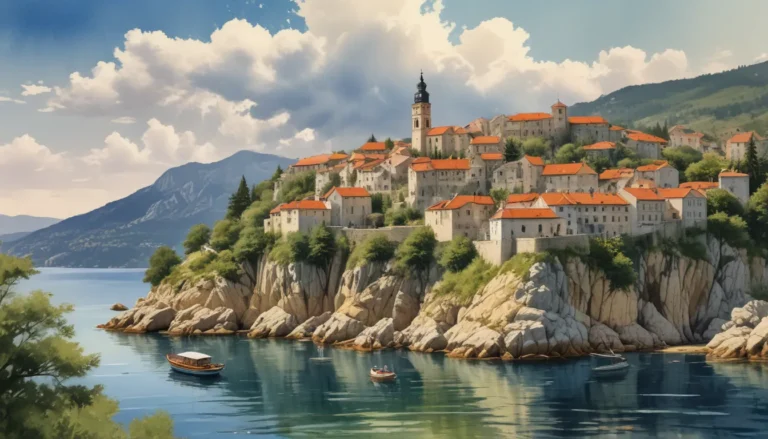The images in our articles are for illustrative purposes only and may not exactly match the content. They are intended to capture your interest and complement the text, not to replace it.
Welcome to Armenia, a hidden gem nestled in the South Caucasus region of Eurasia. Steeped in history, culture, and natural beauty, Armenia offers a rich tapestry of experiences for travelers and enthusiasts alike. Join us as we uncover 20 fascinating facts about Armenia, shedding light on its unique heritage and captivating allure. Get ready to embark on a journey through the wonders of this enchanting country!
Unveiling Ancient Civilizations
Armenia boasts a rich history dating back over 3,000 years, making it home to one of the world’s oldest civilizations. The ancient kingdom of Urartu, which thrived in the 9th century BCE, serves as a testament to Armenia’s enduring legacy.
Embracing the Land of Churches
Known as the “Land of Churches,” Armenia is steeped in religious heritage. The country is adorned with countless ancient churches and monasteries, many of which have earned UNESCO World Heritage status for their historical significance.
Behold Mount Ararat’s Majesty
The iconic Mount Ararat, situated in eastern Turkey near the Armenian border, holds great cultural significance for Armenians. Believed to be the resting place of Noah’s Ark, this majestic peak offers a sight to behold from various vantage points across Armenia.
Discovering Khor Virap Monastery
Located near the Turkish border, Khor Virap Monastery provides stunning views of Mount Ararat. This sacred site holds historical and religious importance, as it is where Saint Gregory the Illuminator was imprisoned for 13 years, shaping Armenia’s spiritual landscape.
Celebrating the Armenian Alphabet
Armenians proudly claim the title of inventors of the alphabet. In the 5th century CE, Mesrop Mashtots created the Armenian alphabet, a pivotal achievement that contributed to the preservation of Armenian language and culture.
Delving into Apricot Paradise
Armenia is renowned for its succulent apricots, thanks to the country’s favorable climate and fertile soil. The apricot, considered the national fruit of Armenia, thrives in these ideal conditions, adding a burst of flavor to Armenian cuisine.
Preserving Lavash as Cultural Heritage
UNESCO has recognized Armenian lavash, a traditional flatbread, as an Intangible Cultural Heritage of Humanity. The art of lavash-making holds a special place in Armenian households, with this beloved bread often shared during festive gatherings.
Exploring the Majesty of Lake Sevan
Nestled in the heart of Armenia, Lake Sevan stands as one of the world’s largest high-altitude lakes. Surrounded by picturesque landscapes, this tranquil destination is a favorite among tourists and nature enthusiasts alike.
Unveiling Armenia’s Chess Legacy
Armenia boasts a deep-rooted love for chess, producing world-class players who have secured victories in the Chess Olympiad. With wins in 2006, 2008, and 2012, Armenia shines as a powerhouse in the world of chess.
Symbolism of the Pomegranate
The pomegranate holds symbolic significance in Armenian culture, representing fertility, abundance, and good luck. Adorning art and architecture, the vibrant red fruit embodies the cultural richness of Armenia.
Embracing the Art of Carpet Weaving
Armenia’s tradition of carpet weaving dates back thousands of years, showcasing intricate designs and vibrant colors that reflect the country’s cultural heritage. Armenian carpets are renowned for their craftsmanship and beauty.
Marveling at Yerevan, the Pink City
Yerevan, Armenia’s capital city, is affectionately referred to as the “Pink City” due to the pink volcanic tuff stones used in its architecture. Bustling with markets, cafés, and cultural experiences, Yerevan exudes a vibrant energy that beckons visitors.
Unearthing the Secrets of Areni-1 Cave
The Areni-1 Cave in Armenia holds the distinction of being the site of the world’s oldest known winery, dating back over 6,000 years. This archaeological find sheds light on Armenia’s rich history of winemaking.
Captivated by the Duduk’s Melodies
The duduk, a traditional Armenian woodwind instrument, enchants listeners with its soulful melodies. Recognized by UNESCO as a Masterpiece of the Oral and Intangible Heritage of Humanity, the duduk embodies the spirit of Armenian folk music.
Tatev Monastery and the Wings of Tatev
Perched on a cliff in southeastern Armenia, Tatev Monastery showcases medieval architecture at its finest. Linked to the village of Halidzor by the Wings of Tatev, the world’s longest reversible aerial tramway, this site offers unparalleled views of the surrounding landscape.
Savoring Armenian Brandy
Armenian brandy has garnered international acclaim for its exceptional quality. With a rich tradition of brandy production, Armenia stands as a premier destination for connoisseurs seeking exquisite spirits.
Admiring Khachkars’ Intricate Designs
Khachkars, intricately carved stone crosses, hold a special place in Armenian religious and cultural heritage. These unique works of art can be found throughout the country, adorning churches and monastic complexes.
Connecting with Armenia’s Silk Road Legacy
Armenia played a pivotal role as a stop along the ancient Silk Road trade route, facilitating cultural exchange between Europe and Asia. This historical connection enriched Armenia’s cultural diversity and traditions.
Indulging in Armenian Hospitality and Cuisine
Armenians are renowned for their warm hospitality, with food serving as a centerpiece of Armenian culture. Traditional dishes like dolma, khorovats, and lavash bread offer a delectable taste of Armenia’s culinary heritage.
Honoring the Eternal Flame of Zvartnots
Though now in ruins, Zvartnots Cathedral, an architectural marvel from the 7th century, symbolizes Armenia’s enduring culture and resilient spirit. The eternal flame at this site signifies the timeless essence of Armenian heritage.
Embark on a Journey Through Armenia
Armenia beckons with its seamless blend of ancient traditions and modern marvels. From historical landmarks to scenic landscapes, the country’s vibrant culture offers a rich tapestry of experiences for visitors. Immerse yourself in Armenia’s captivating history, art, and natural wonders for a truly enriching journey.
Frequently Asked Questions about Armenia
Is Armenia safe for tourists?
Armenia is considered a safe destination for tourists, with low crime rates and a welcoming local population. Travelers are advised to exercise basic precautions and stay informed about any travel advisories.
What is the best time to visit Armenia?
The optimal times to visit Armenia are during spring (April to June) and autumn (September to October) when the weather is pleasant. Summers can be hot, while winters offer opportunities for winter sports enthusiasts.
Are English and Russian widely spoken in Armenia?
While Armenian is the official language, English is commonly spoken in urban areas and tourist destinations. Russian is also prevalent due to historical ties with the former Soviet Union.
Can I visit Mount Ararat from Armenia?
Mount Ararat is located in eastern Turkey, with the border between Armenia and Turkey currently closed. However, visitors can enjoy stunning views of Mount Ararat from various points within Armenia.
What are some traditional Armenian souvenirs?
Traditional Armenian souvenirs include handmade carpets, woodwork, pottery, Armenian brandy, and musical instruments like the duduk. These unique items capture the essence of Armenian culture and make for memorable keepsakes.
Armenia welcomes you to explore its rich history, vibrant culture, and breathtaking landscapes. As you journey through this enchanting country, immerse yourself in its ancient traditions, modern delights, and warm hospitality. Discover the allure of Armenia and create lasting memories amidst its captivating tapestry of beauty and heritage.






